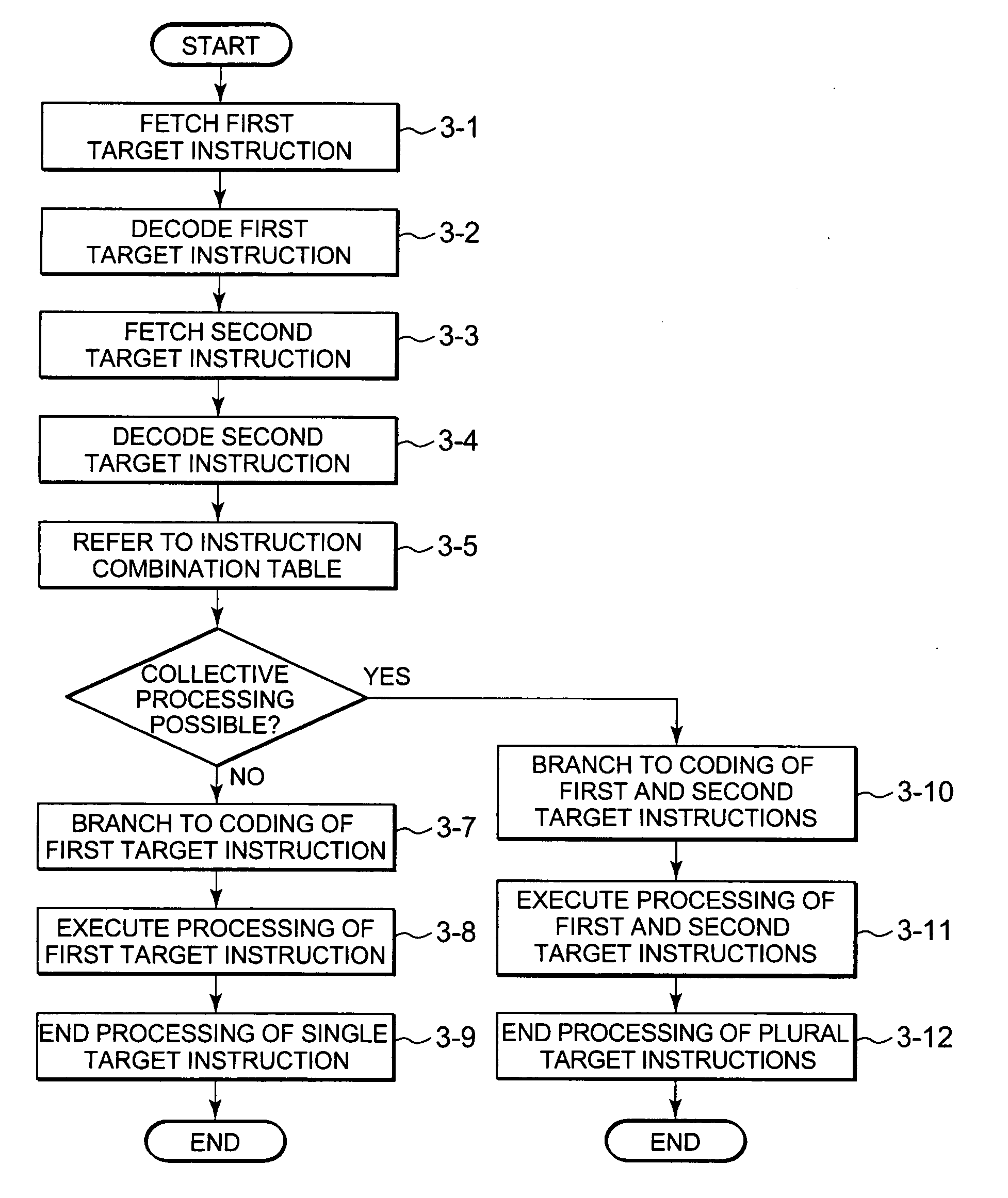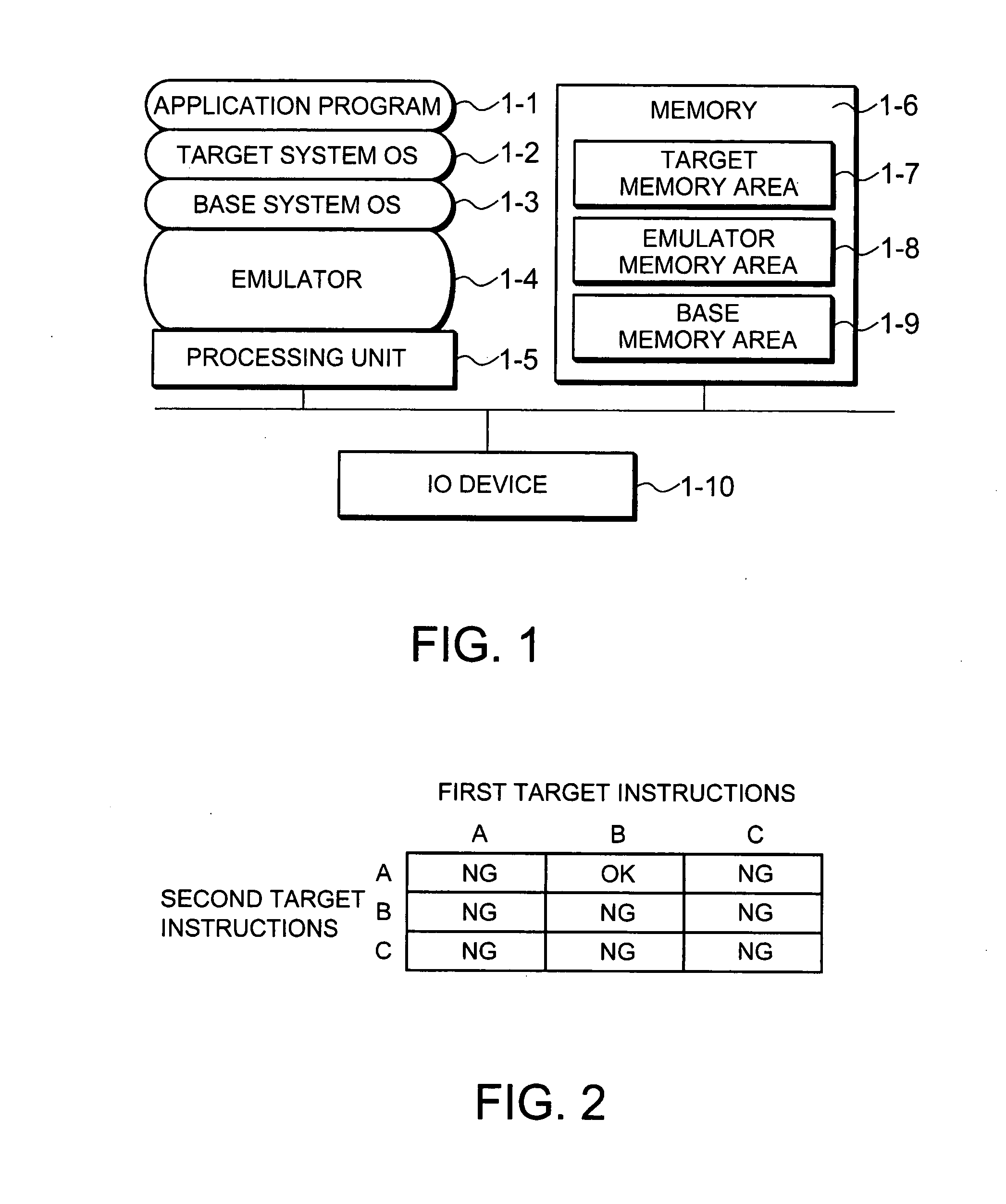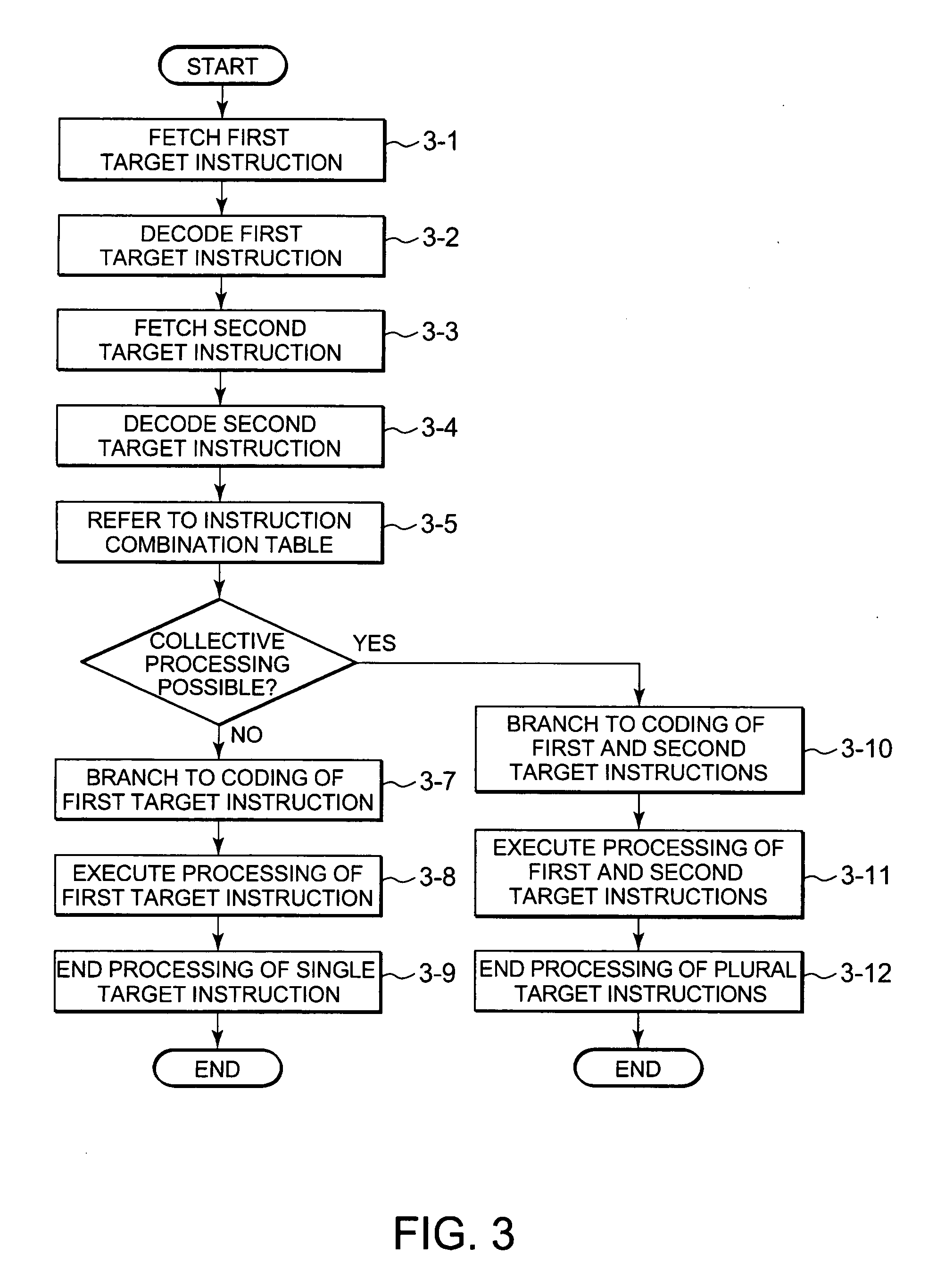Emulation method and computer system
- Summary
- Abstract
- Description
- Claims
- Application Information
AI Technical Summary
Benefits of technology
Problems solved by technology
Method used
Image
Examples
embodiments
. EMBODIMENTS
[0041]Hereunder, the preferred embodiments of the present invention will be described with reference to the accompanying drawings.
[0042]The computer system of the present invention includes an emulator (emulation program), which is provided with functions for processing plural target instructions collectively, thereby improving the emulation speed of the target system. Concretely, in case where plural target instructions to be processed collectively are combined for emulation, those target instructions, which are created beforehand, are branched to collective emulation coding and processed collectively according to the coding.
first embodiment
[0043]FIG. 1 shows a block diagram of a computer system of the present invention.
[0044]As shown in FIG. 1, the computer system of the present invention comprises a processing unit 1-5 that includes a processor (VCPU); a memory 1-6 for storing programs and information required for the processings of the processing unit 1-5; and an input device for inputting commands, information, etc. to the processing unit 5-1 or an IO device (Input Output), which is used to monitor results of processings of the processing unit 5-1.
[0045]The memory 1-6 includes a target memory area 1-7 for storing a target system OS; an emulator memory area 1-8 for storing an emulation program (emulator 1-4); and a base memory area 1-9 for storing a base system OS.
[0046]The memory 1-6 also stores an instruction combination table to be described later and a process branch table or instruction combination history table that are all used by an emulation method of the present invention. The memory 6-1 may be any of such...
second embodiment
[0073]Next, a computer system in a second embodiment of the present invention will be described with reference to the accompanying drawings.
[0074]The second embodiment aims at improving the emulation speed by using a process branch table instead of the instruction combination table used in the first embodiment. The computer system configuration is the same as that in the first embodiment, so that the description of the system configuration in this second embodiment will be omitted here.
[0075]As shown in FIG. 14, the process branch table stores process names denoting predetermined processes, instruction counters corresponding to those process names respectively, and information denoting coding branch destinations for processing plural target instructions collectively in the respective processes. The process names, instruction counters, and branch destinations are related at one-to-one-to-one correspondence.
[0076]FIG. 15 shows a concrete example of denoting each process name and an in...
PUM
 Login to View More
Login to View More Abstract
Description
Claims
Application Information
 Login to View More
Login to View More - R&D
- Intellectual Property
- Life Sciences
- Materials
- Tech Scout
- Unparalleled Data Quality
- Higher Quality Content
- 60% Fewer Hallucinations
Browse by: Latest US Patents, China's latest patents, Technical Efficacy Thesaurus, Application Domain, Technology Topic, Popular Technical Reports.
© 2025 PatSnap. All rights reserved.Legal|Privacy policy|Modern Slavery Act Transparency Statement|Sitemap|About US| Contact US: help@patsnap.com



